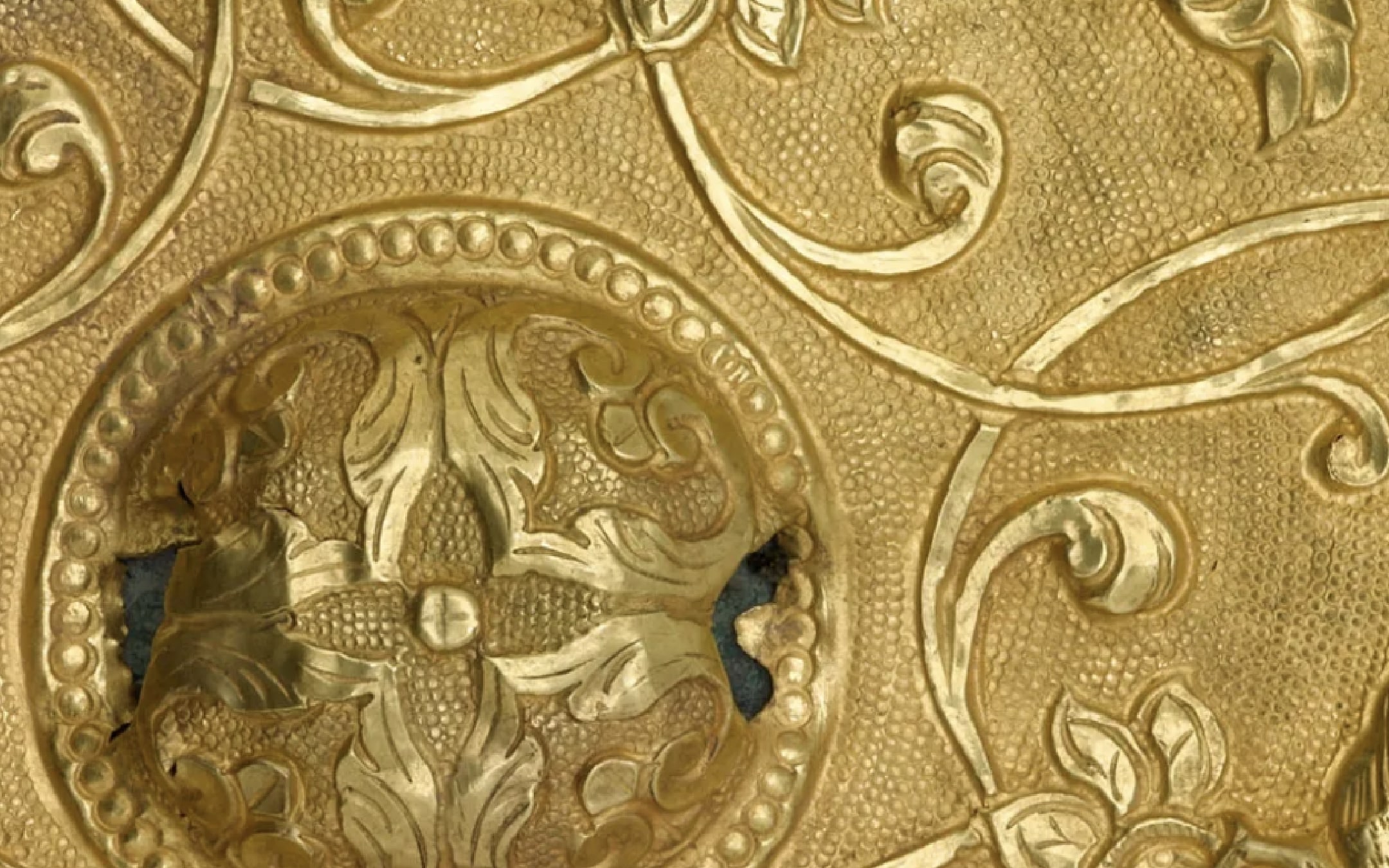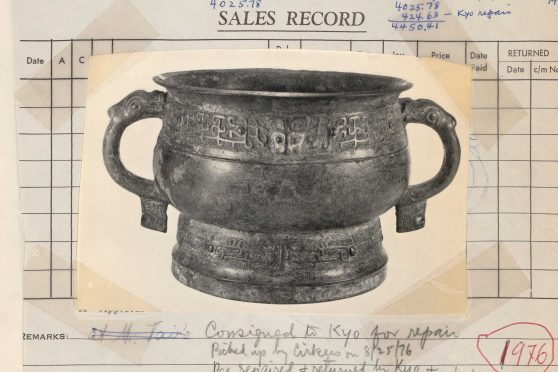The Smithsonian’s National Museum of Asian Art has announced a major gift of inventory records of J.T. Tai & Co., an important dealer of Chinese antiquities who shaped American collections of Chinese art throughout the second half of the 20th century. J.T. Tai (1911–1992), owner of the company, was the first to donate objects to the Center for Asian Art of the Smithsonian Institution, now part of the National Museum of Asian Art. Victoria W. Hsu, secretary of the board of directors at the J.T. Tai & Co. Foundation, and other board members acted on behalf of the late Tai, generously presenting J.T. Tai & Co.’s inventory records to the National Museum of Asian Art during the museum’s centennial celebrations.
Researching and documenting provenance—the history of an object’s ownership, from its creation to the present—are core activities of the National Museum of Asian Art, and the museum’s team of four full-time provenance researchers is an unprecedented number for a museum of its size. Their work animates the museum’s strategic plan goals: to expand, preserve and celebrate its collections; to identify, attract and serve new and diverse audiences through both its physical and digital spaces; to foster an object-inspired understanding of the arts, communities, cultures and societies of Asia; and to build a museum culture that is creative, collaborative, transparent and resourceful. The addition of this material contributes to the museum’s ongoing portfolio of provenance research, which includes convening the first major symposium on Asian art provenance research.
With this new gift, the museum’s archives now include more than 165 archival collections that it makes available to experts around the world. The J.T. Tai & Co. archive will significantly impact the knowledge of the art market of Chinese objects in the United States. The museum will digitize the documents and make them available to researchers, allowing unprecedented access to information on objects sold through the company. This landmark acquisition will provide provenance researchers at museums across the country (and globally) the tools to answer questions about their collections’ history that formerly remained ambiguous or unsolved.
Tai operated his business in New York City from 1950 until shortly before his death in 1992. J.T. Tai & Co. and Tai himself immensely influenced the development of several important American collections of Asian Art; Tai ranks second only to fellow dealer C.T. Loo in his impact on advising institutions and scholars alike.
“I could not be more pleased to announce that our museum has just been given an extraordinary gift of documents,” said Chase F. Robinson, the museum’s director. “J.T. Tai was a leading international dealer of Chinese objects. Thousands of works of art passed through his company and populated the leading private and museum collections in the West. That’s why the inventory records of J.T. Tai & Co. are something of a holy grail for provenance research, offering unique documentation for object histories.”
Joanna M. Gohmann, the museum’s provenance researcher and object historian, and J. Keith Wilson, curator of ancient Chinese art, made several visits to the collection to study the documents and history of the company.
“This incredible archival collection will propel research into the provenance history of Asian art,” Gohmann said. “These documents will transform our understanding of collecting Chinese art in America. They reveal an intricate, international network of dealers and collectors. There is so much to discover and so many histories to share!”
About J.T. Tai
Tai (née Dai Fubao and later styled with the courtesy name Runzhai; he adopted the moniker J.T. Tai when he immigrated to the United States) began his career at his uncle’s small antique store in Wuxi, China, and later moved onto cosmopolitan Shanghai, where he opened his own store Fuyuanzhai guwandian. Between 1945 and 1949, Tai regularly sold antiquities sourced in China to Loo, who in turn sold them to Western clients in Paris, London and New York. Upon the establishment of The People’s Republic of China, Tai fled his homeland and found refuge in Hong Kong. In early 1950, Tai immigrated to New York City with the help of Loo.
About J.T. Tai & Co.
The Aug. 21, 1950, edition of The New York Times announced the grand opening of Tai’s Madison Avenue gallery, J.T. Tai & Co. The National Museum of Asian Art formed a long, enduring relationship with J.T. Tai & Co. acquiring several works of art through the gallery. Tai was deeply invested in making Chinese art visible and accessible. In 1981, Tai and Dr. Fucheng Richard Hsu, president of the China Institute in America (1969–1983), developed a charitable foundation, the J.T. Tai & Co. Foundation, which—to this day—supports higher education and health care.
About the Smithsonian’s National Museum of Asian Art
The Smithsonian’s National Museum of Asian Art is committed to preserving, exhibiting, researching and interpreting art in ways that deepen our collective understanding of Asia, the United States and the world. Home to more than 46,000 objects, the museum stewards one of North America’s largest and most comprehensive collections of Asian art, with works dating from antiquity to the present from China, Japan, Korea, South Asia, Southeast Asia and the Islamic world. Its rich holdings bring the arts of Asia into direct dialogue with an important collection of 19th- and early 20th-century art from the United States, providing an essential platform for creative collaboration and cultural exchange between the U.S., Asia and the Middle East.
Beginning with a 1906 gift that paved the way for the museum’s opening in 1923, the National Museum of Asian Art is a leading resource for visitors, students and scholars in the United States and internationally. Its galleries, laboratories, archives and library are located on the National Mall in Washington, D.C., and are part of the world’s largest museum complex, which typically reports more than 27 million visits each year. The museum is free and open to the public 364 days a year (closed Dec. 25), making its exhibitions, programs, learning opportunities and digital initiatives accessible to global audiences.


